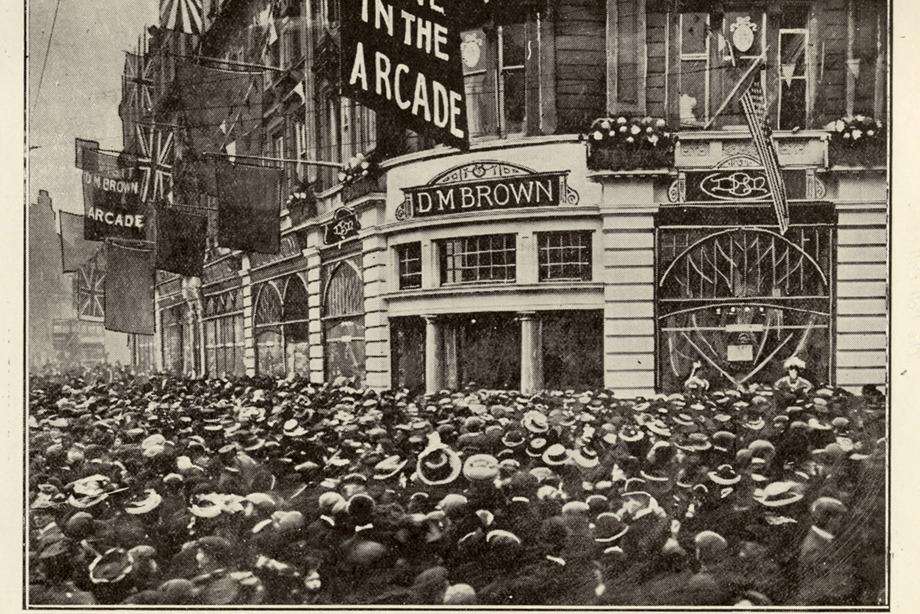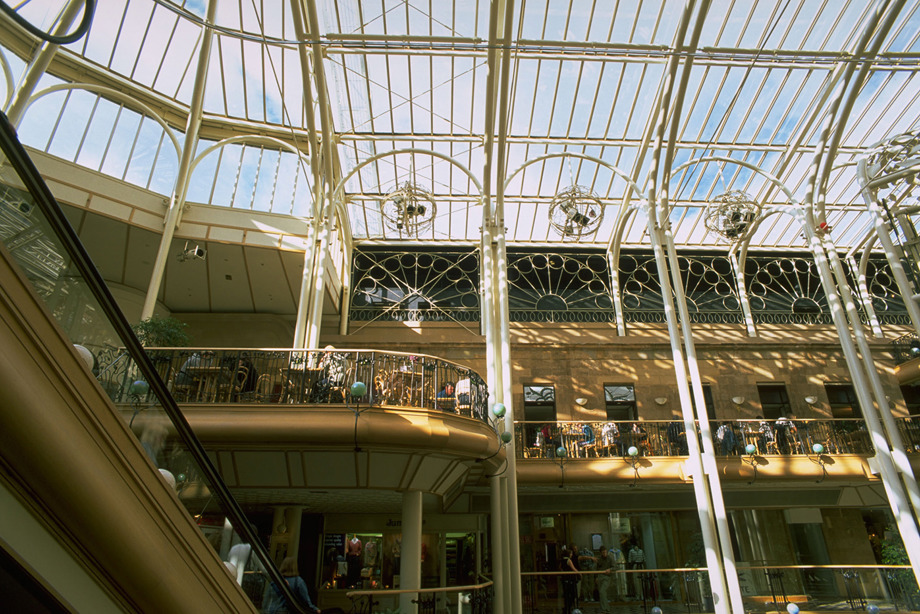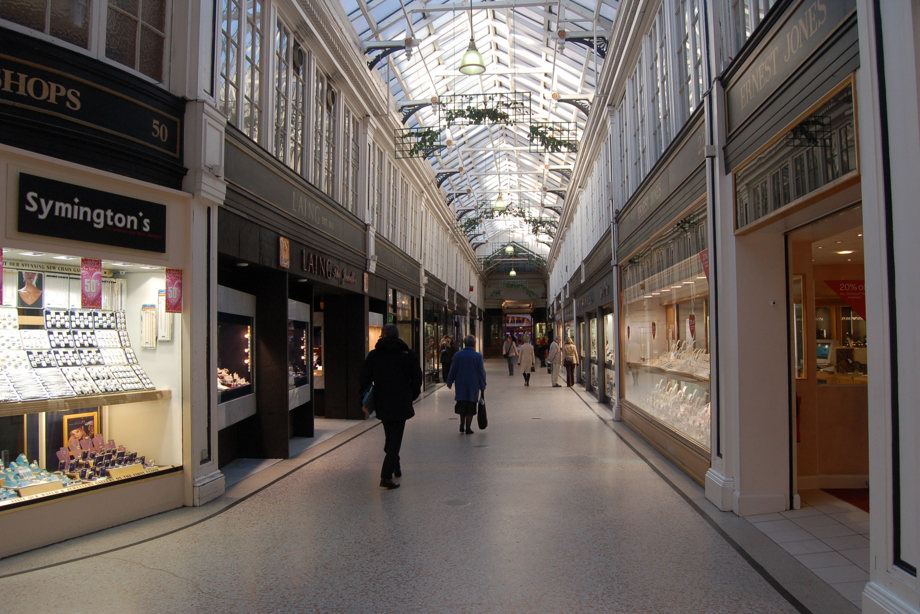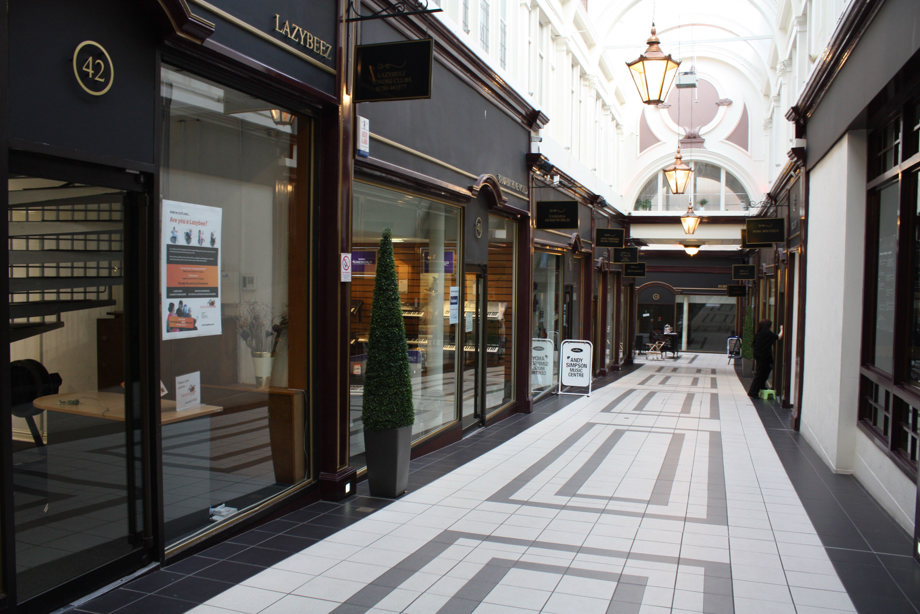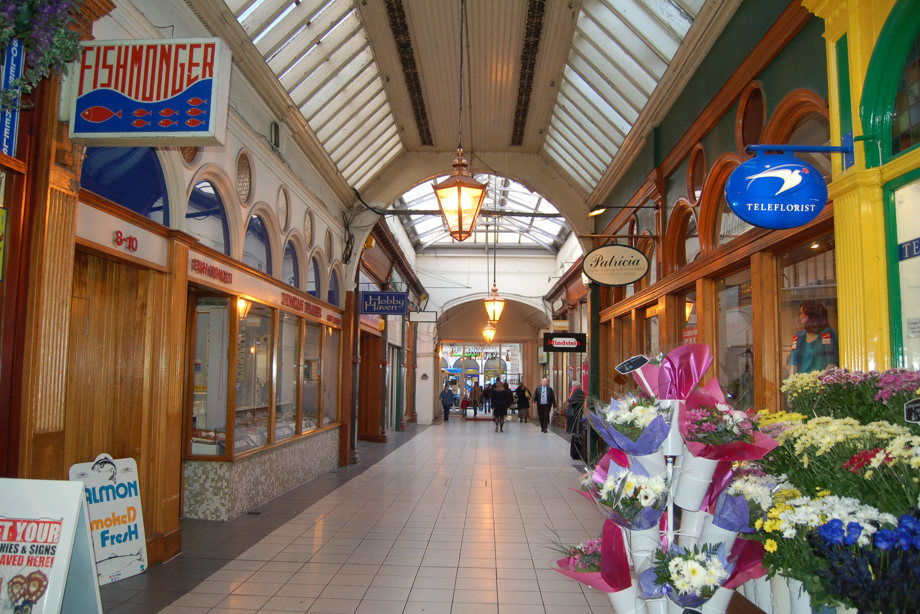Inspired by Parisian examples, the first true shopping arcade in Britain was the Royal Opera Arcade in London, built 1815–17.
Scotland’s shopping arcades vary in style. They reflect the great architectural variety found across the country.
In contrast to modern shopping centres, traditional arcades showcase our opulent retailing past.
Today, these arcades boast small, interesting and often independent shops.
D.M. Browns, Dundee
The opening of D.M. Brown’s shopping arcade at 80 High Street, Dundee in 1908 attracted considerable crowds.
David Millar Brown set up business at number 80 High Street in 1888. His first shop had one window which he filled with a colourful selection of goods. He started his business with 3 people and eventually employed over 400.
By 1908 D.M. Browns stretched from the original shop, down the High Street and round to Commercial Street.
David Millar Brown served his apprenticeship with various drapers in Lochee and Dundee.
Princes Square, Glasgow
Princes Square, in the heart of Glasgow City Centre, was opened in 1988. The building itself was erected in 1841.
Hugh Martin and Partners for Guardian Assurance designed the shopping centre in the mid-1980s.
Combining the new with the old, its atmosphere is reminiscent of traditional shopping arcades.
It incorporates a Victorian courtyard, roofed over to form the main hall.
Learn more about Princes Square and Scotland's Postmodern Architecture.
The Crawford Arcade, Stirling
The Crawford Arcade was the idea of enterprising china merchant William Crawford.
He saw the opportunity to connect two streets (King Street and Murray Place) with a covered arcade.
Construction began in 1879 and, once completed, it housed 39 shops, two hotels, a 1,200 seat theatre and six residential flats.
Now known as the Stirling Arcade, it's modern inside and features cafes and specialty retailers.
Market, Union Street and Queensgate Arcade, Inverness
This complex building is made up of a market hall with adjoining arcades.
The original public market and arcade were built in 1869-70 by Matthews and Lawrie.
Extensions were added in 1890 and 1897, creating a retail space with great architectural variety.
Cast iron, timber, faience and polished granite feature in the design.
Take a closer look at the arcade with these archive photographs.
Scotland's Historic Shops continued
Continue your exploration of Scotland's extraordinary historic shops.

